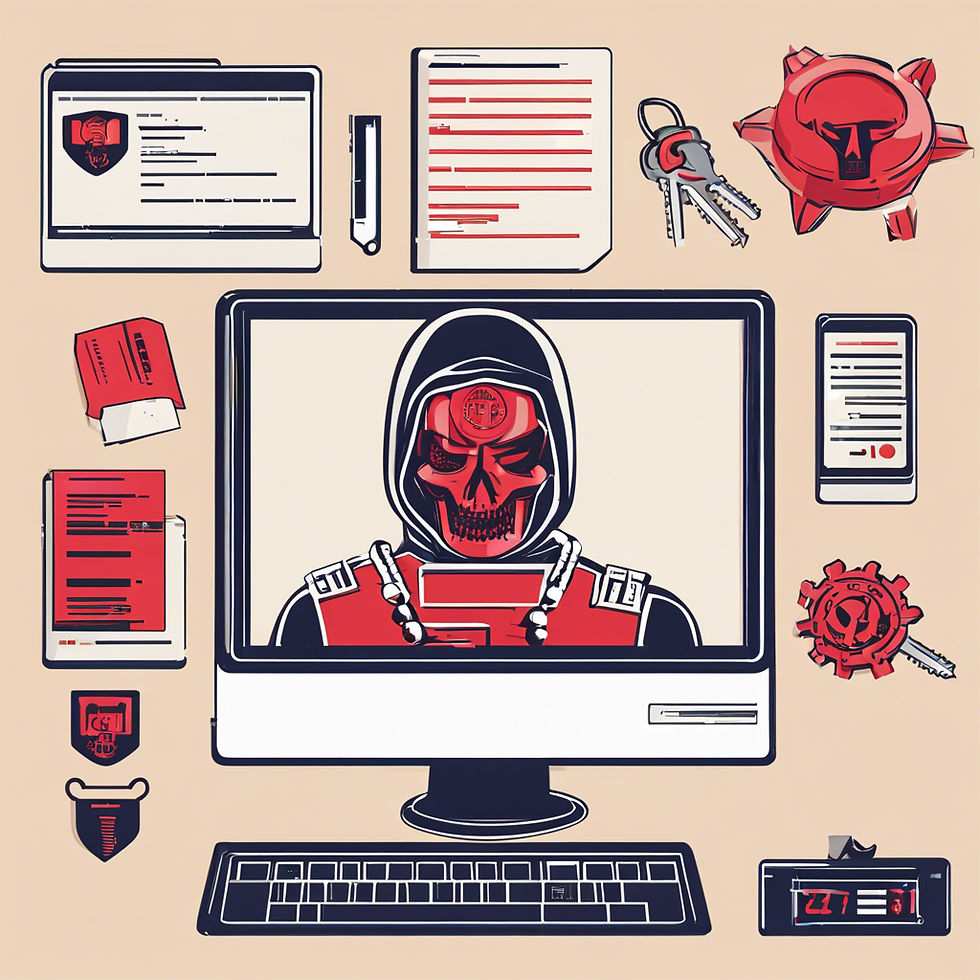The Evolution of Ransomware: Understanding the Ransomware-as-a-Service (RaaS) Model
- Aug 3, 2024
- 2 min read

In our previous blog, we delved into the history and evolution of ransomware, from the AIDS Trojan to modern-day threats. Today, we turn our focus to a revolutionary concept that has significantly altered the ransomware landscape: Ransomware-as-a-Service (RaaS). This model has transformed ransomware operations into a streamlined, profit-driven industry. The Advent of Ransomware-as-a-Service (RaaS)
Ransomware-as-a-Service, commonly known as RaaS, has revolutionized the cybercrime ecosystem. It provides a turn-key solution for ransomware operations, making it accessible even to those with limited technical expertise.
How RaaS Works
The general theory of the RaaS model is straightforward:
Development: A developer or a group of developers creates a ransomware payload. They might also develop a "builder," which can generate customized payloads on demand.
Subscription: The ransomware is offered through a subscription-based program, effectively leasing it out to third parties.
Affiliates: Those who lease the ransomware, known as affiliates, are responsible for deploying it within as many organizations as possible.
Profit Sharing: The profits from successful attacks are typically split between the developer and the affiliate, with a common split being 30% to the developer and 70% to the affiliate.
Roles in the RaaS Business Model
The RaaS ecosystem is structured with several specialized roles, each playing a crucial part in the success of ransomware campaigns:
Initial Access Brokers (IABs):
Role: IABs are responsible for gaining initial access to victim networks. They sometimes market themselves as "pentesters" to lend a sense of legitimacy to their work.
Method: They may exploit vulnerabilities, use phishing attacks, or purchase access credentials to infiltrate networks.
Affiliates:
Role: Affiliates use the access provided by IABs to deploy ransomware within victim environments.
Function: Their core tasks include exfiltrating data and deploying the ransomware payload.
Data Managers:
Role: These individuals handle and sort exfiltrated data.
Purpose: They identify and archive the most valuable information to use for extortion purposes.
Operators:
Role: The development crew behind the scenes.
Function: They develop and maintain the encryption payloads and associated infrastructure.
Negotiators:
Role: Negotiators handle ransom payment discussions.
Advice: It's crucial to be cautious when engaging with negotiators directly, as they are skilled in maximizing payouts.
Chasers:
Role: These individuals apply psychological pressure on victims to pay the ransom.
Methods: They may contact victims via phone or email, reach out to their business partners, or use other means to increase the urgency and stress of the situation.
Accountants:
Role: Accountants are responsible for money laundering and handling ransom payments.
Function: They ensure that payments are "cleaned" and can be used without detection, often holding payments for days or weeks before processing them.
Conclusion
The RaaS model has made ransomware attacks more organized and efficient, creating a thriving underground economy.
In the next few blogs, we will delve deeper into each of these roles, examining how they contribute to the overall ransomware operation and discussing strategies for defense and mitigation. Stay tuned as we uncover more about the dark world of ransomware and the ongoing battle to protect our digital landscapes.
Akash Patel



Comments